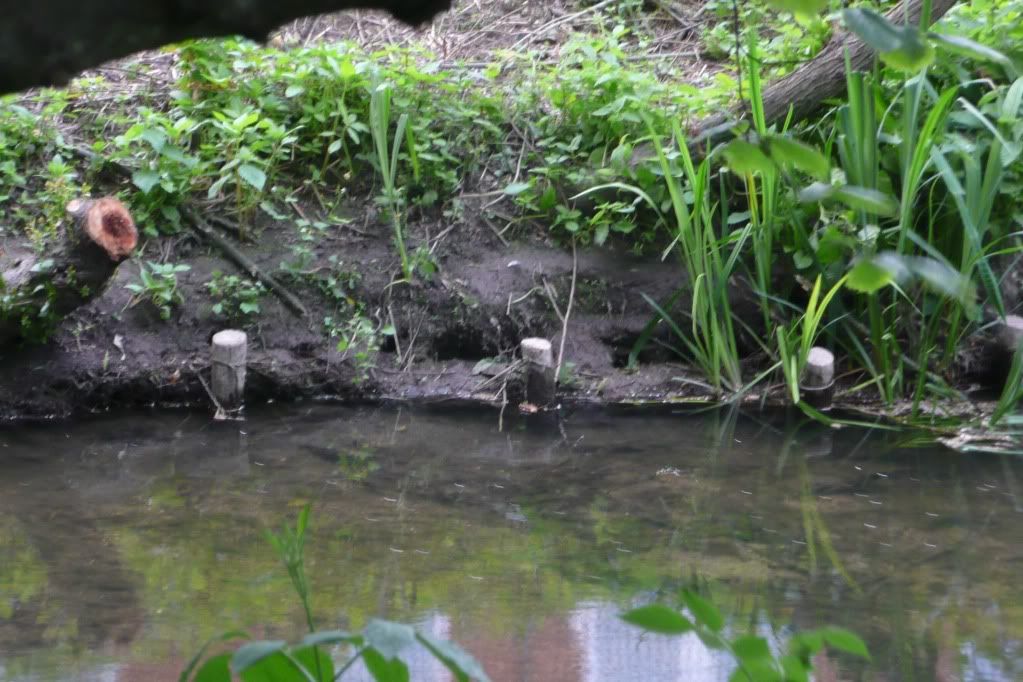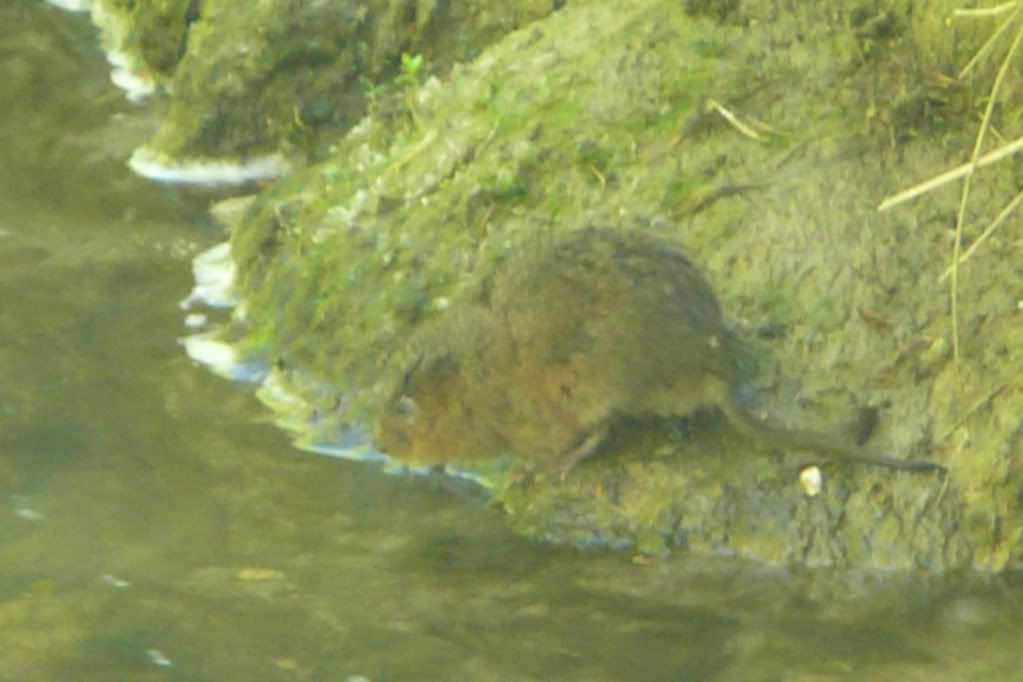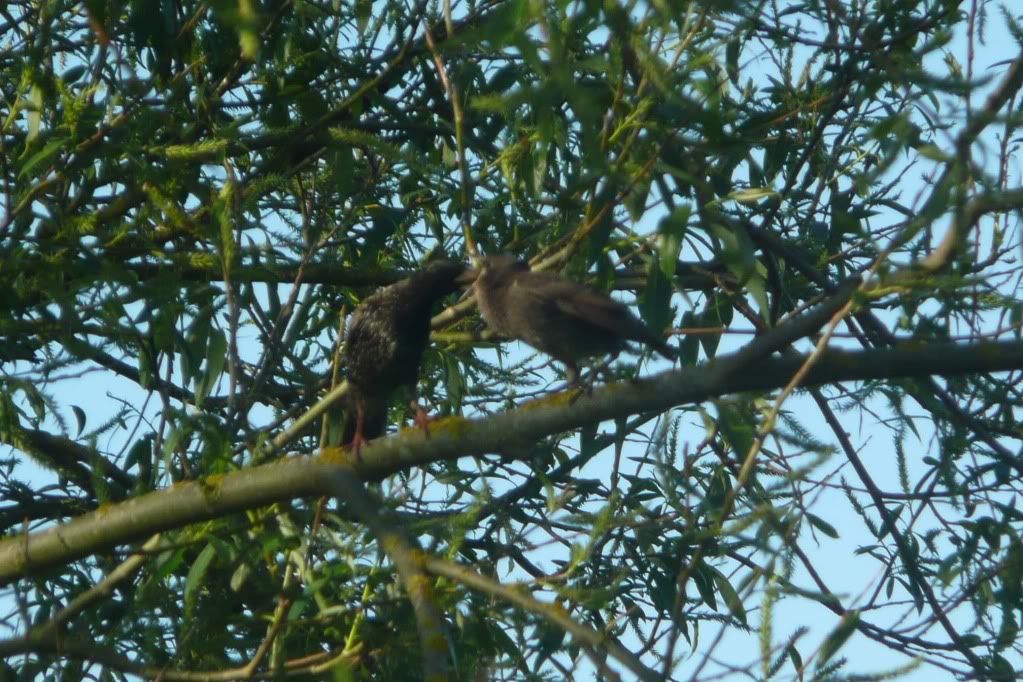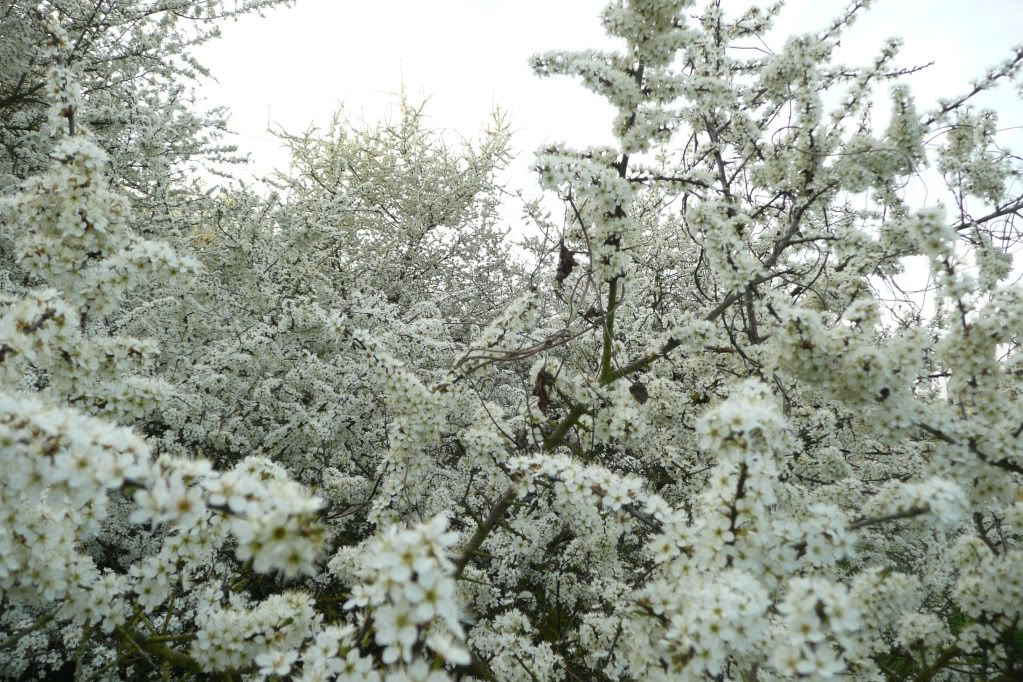For confirmation of water voles in the areas it's latrines, feeding signs or an actual sighting that is required. And it was a sighting from the bridge next to the Ock Mill pub and restaurant.
No picture of water voles this time, but another pin in the map. As can be seen from, most of the upper Ock is has over hanging trees, but this doesn't seem to stop the water voles.
View Water voles 2010 in a larger map



























